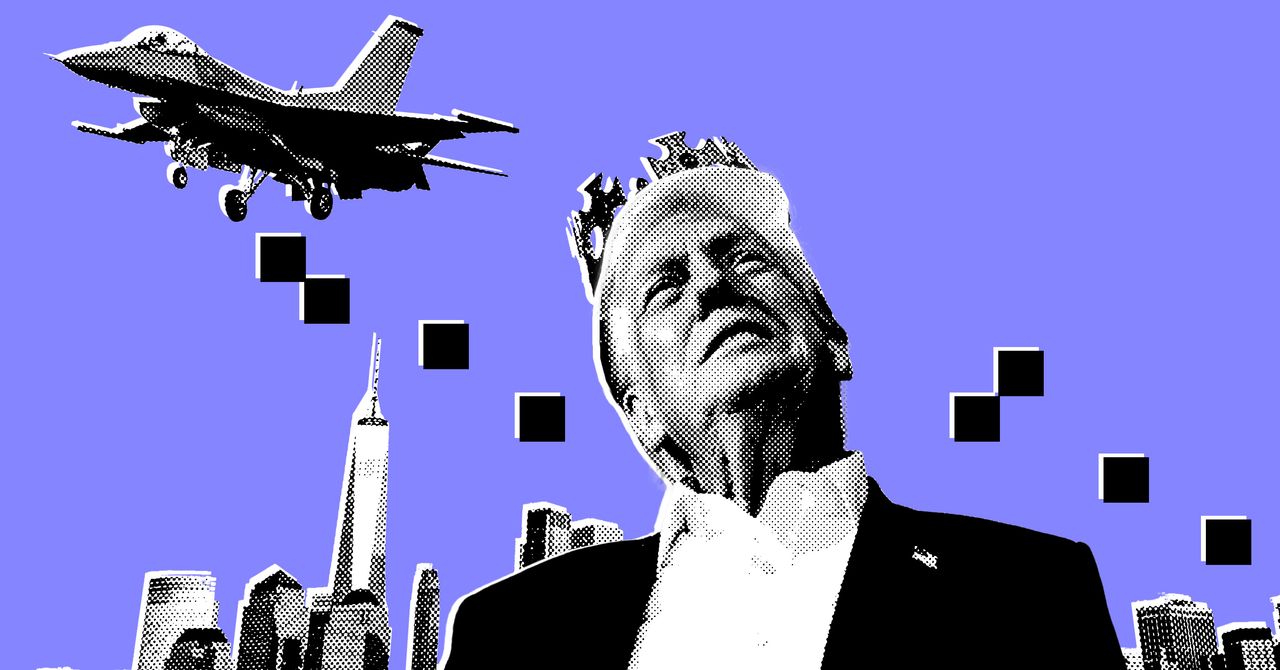President Donald Trump, a septuagenarian known for his general avoidance of keyboards and computers, has somehow become America’s first generative AI president.
The most infamous example of his experimentation with AI-generated videos came ahead of the No Kings protests earlier this month. In the clip, the president is decked out in full Top Gun gear, piloting a fighter jet bearing “KING TRUMP” on its side. Instead of a traditional pilot’s helmet, however, the president is wearing a literal crown, just in case the rest of the visuals were too subtle. The plane succeeds in its mission: dumping inconceivable amounts of shit upon fictionalized No Kings protesters in New York’s Times Square.
This is just the latest AI slop Trump has posted. He’s also shared a racist depiction of House minority leader Hakeem Jeffries wearing a mustache and sombrero, a highly dystopian, bizarre “Trump Gaza” video, and more.
You have to wonder—how do these videos end up on Trump’s official account in the first place?
The president of the United States, I’ve learned, is at the very least capable of posting AI videos on main: According to a senior White House official, there are times when Trump will come across a video he finds particularly funny or amusing—either on Truth Social or through other unspecified channels—save it to his camera roll, and release it into the world. Most of the time, though, it’s staffers who identify a clip and gain approval for it to be posted on the president’s main account. Either way, Trump isn’t making the actual videos himself.
The White House remains cagey as to how the fighter jet video, specifically, ended up happening, and who, exactly, hit the button to post it.
As a general trend, it appears Trump is typing away on social media less than in his peak posting days, a former Trump campaign official tells me. He has long relied on dictation and annotated printouts, while still being prone to the more than occasional covfefe-esque typo.
Long before his descent into the AI slop trenches, Trump saw the value in having a team manage his Twitter presence. Trump would go on to strike fear into Republican politicians and business executives with his news-making and market-moving tweets throughout his first term in office, before getting suspended from the platform after inciting the January 6 insurrection. In the social media wilderness, he founded Truth Social in October 2021.
In the Truth Social era of the Trump White House, the president usually delegates his social media posts to two key staffers.
There’s Dan Scavino, a longtime Trump adviser who has climbed all the way from an assistant manager position at the Trump National Golf Club Westchester to director of the White House Presidential Personnel Office, officially replacing Sergio Gor earlier this month. As Scavino has expanded his portfolio and delegated more of his longer-standing duties around the social media operation, Natalie Harp, a key Trump aide who’s been referred to internally as “the human printer,” has become an increasingly powerful figure in what type of content emanates from the administration.
Laura Loomer, the conspiracy theorist and de facto MAGA loyalty czar who has Trump’s ear, tells me she estimates that 95 percent of the time, it’s Scavino or Harp who physically execute the Truth Social posts, which is in line with the guesstimates of other Trumpworld sources I spoke with. (Trump’s share of the posting from the peak Twitter era was “significantly higher than that,” the former campaign official adds.)
There’s still a lot we don’t know about the Trump administration’s use of generative AI videos. We don’t know who is making the ones he doesn’t simply encounter in the wild and getting them in front of the president. We also don’t know if there’s a preferred service among the accounts from which the videos originate, such as xAI’s Grok Imagine or Open AI’s Sora.
Regardless of the software at play, the president has brought the nation into new territory with his use of this technology. Sure, it may not be the more sci-fi and Machiavellian version of deepfakes once feared. But it’s still a bad spot to be in.
For years, experts have warned of the perils deepfake videos could pose to our democracy. Those of us covering US politics in this era have been waiting for “the big one,” a doctored video of something so severe that it upends an election, triggers a stock market meltdown, or starts a war.
That day may well come. For now, though, we’re on a far dumber part of the timeline. As I tried to discern what the White House’s strategy is when it comes to these videos, it became increasingly apparent that there is none—except for, perhaps, trolling and mockery for their own sake.
And still—we have an aging president who has been prone to mistaking B-roll footage on Fox News from Portland in 2020 with real conditions on the ground and is now playing it fast and loose with the type of AI that blurs the lines between truth and fiction, between the serious and the absurd. What could go wrong?
Disclaimer : This story is auto aggregated by a computer programme and has not been created or edited by DOWNTHENEWS. Publisher: wired.com






